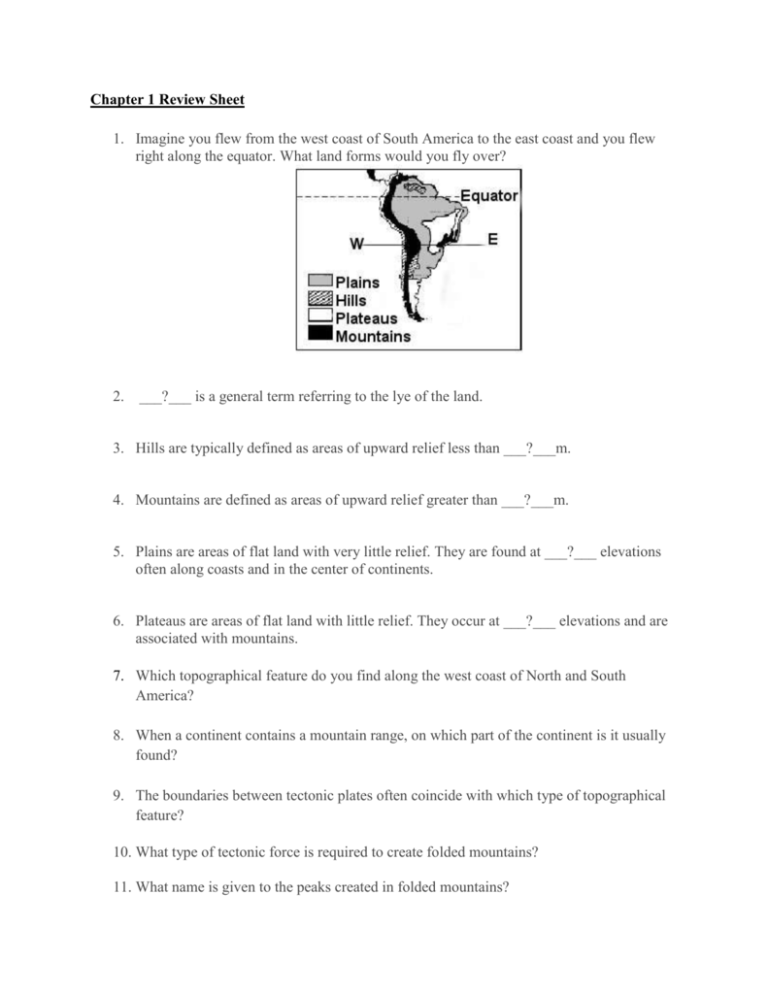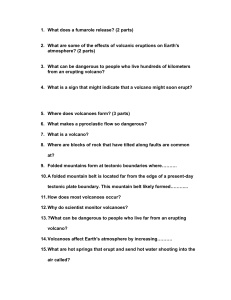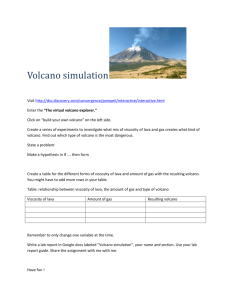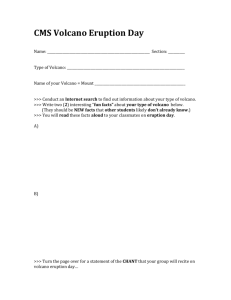Chapter 1 Review Sheet
advertisement

Chapter 1 Review Sheet 1. Imagine you flew from the west coast of South America to the east coast and you flew right along the equator. What land forms would you fly over? 2. ___?___ is a general term referring to the lye of the land. 3. Hills are typically defined as areas of upward relief less than ___?___m. 4. Mountains are defined as areas of upward relief greater than ___?___m. 5. Plains are areas of flat land with very little relief. They are found at ___?___ elevations often along coasts and in the center of continents. 6. Plateaus are areas of flat land with little relief. They occur at ___?___ elevations and are associated with mountains. 7. Which topographical feature do you find along the west coast of North and South America? 8. When a continent contains a mountain range, on which part of the continent is it usually found? 9. The boundaries between tectonic plates often coincide with which type of topographical feature? 10. What type of tectonic force is required to create folded mountains? 11. What name is given to the peaks created in folded mountains? 12. What term is given to the valleys created in folded mountains? 13. Are many of the worlds mountains formed by folding? 14. How long does it take for folded mountains to form? 15. At which type of tectonic zone would you find folded mountains? (ridge, transform or subduction) 16. What type of fault is depicted in this figure? 17. What name is given to large cracks in the earth's crust. 18. What name is given to faults formed by tensional forces. 19. What type of Mountain is depicted in the Figure below. 20. What name is given to faults formed by compressional forces. 21. What type of fault is depicted below? 22. How do overthrust faults differ from regular reverse faults? 23. Which type of volcano is most explosive? 24. Which type of volcano is least explosive? 25. Which type of volcano is explosive at times and slow flowing lava at times? 26. Which type of volcano has the thickest lava? 27. Which type of volcano has the thinnest, most liquid lava? 28. Which type of volcano often has side vents? 29. Which type of volcano has the gentlest slope? 30. Which type of volcano is steepest? Ash & Cinder 31. What term is given to the opening of a volcano? 32. Liquid, fluid, melted rock below the earth's surface is known as: 33. Liquid, fluid, melted rock that reaches the earth's surface is known as:







